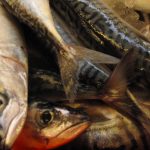Volunteers from Marine Stewardship Council are visiting different stores in South Florida helping consumers to identify seafood as eco-friendly. This movement is growing to ensure abundant and healthy supplies of seafood for years to come. As seas are overfished and fish farms polluted, an array of businesses, consumers and conservation groups are uniting to take action. The main focus of these groups is to monitor and certify that wild catches are limited to sustainable levels and that farms are run in ecological ways.
To help these organizations some global corporations are taking the lead. Wal-Mart, the world’s biggest retailer, has set 2012 as a target date for selling only certified fish, and fast-food giant McDonald’s has switched from threatened species to more plentiful pollock for its fish sandwiches. Consumers are also accessing websites such as www.edf.org or text message a service, Fishphone, and receive health information. University of Miami researchers say so many fish were taken from the oceans between the 1950s and 1980s that the yearly catch has been declining ever since. He also said that new technologies that improve efficiencies have failed to reverse the trend.
It is fact that most seafood now comes from farms, but problems abound there, too. There are farms overcrowded, polluted or pumped with antibiotics that seep into nearby waters. According to researches massive harvests of sardines and other food for fish farms also are prompting imbalances in marine ecosystems, endangering additional species.
The Marine Stewardship Council is considering certification for fish farms. But for now, consumers can look instead for labels from such groups as the Aquaculture Certification Council, based in Washington state. For many consumers, health ranks tops, but figuring out what to eat can be confusing. Health-alert lists suggest avoiding wild sturgeon because of high mercury levels and suggest eating Latin American-farmed tilapia, which feeds on plants.








